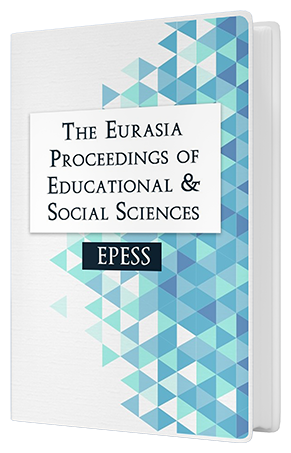THE INFLUENCE OF GENDER, TEOG EXAM SCORES AND SOCIOECONOMIC STATUS ON THE ACCOMPLISHMENT OF STUDENTS REGARDING READING AND INTERPRETATION OF THE FREQUENCY POLYGON AND HISTOGRAM
Keywords:
Gender, socioeconomic status, TEOG exam scores, graphsAbstract
The aim of this current study was to investigate the effects of variables, such as gender, TEOG exam scores and socio-economic status on the 8th grade students about the reading and interpretation of the Frequency Polygon and Histogram. The study included 388 eighth grade students who were from four different middle schools. The researchers used a multiple choice statistics test in the collection of the data. This test contained 22 questions about the reading and interpretation of graphs and finding of the measures of both central tendency and dispersion. This test was developed by the researchers who piloted it and found its reliability of Cronbach's alpha value as 0.80. In the analysis of the data, the researchers used the paired samples t-test, independent samples t-test and two- way ANOVA. The study pointed out that the participants of this study were more successful in reading and interpretation of Frequency Polygon than Histogram. There was no statistically significant difference found with regard to the value of mode in both types of graphs between the achievement levels of the students. However, the study also indicated that the participants were more successful on the items that required the interpretations of standard deviations than the items which required the computation of standard deviations. Moreover, although gender was not a great factor on the accomplishment levels of the participants on the test, both TEOG exam scores and socio-economic status played prominent roles on the students’ achievements on the test. There was a positive relationship between the students’ achievement levels and socio-economic status on the statistics test.Downloads
Published
Issue
Section
License
Copyright (c) 2016 The Eurasia Proceedings of Educational and Social Sciences

This work is licensed under a Creative Commons Attribution-NonCommercial-ShareAlike 4.0 International License.
The articles may be used for research, teaching, and private study purposes. Any substantial or systematic reproduction, redistribution, reselling, loan, sub-licensing, systematic supply, or distribution in any form to anyone is expressly forbidden. Authors alone are responsible for the contents of their articles. The journal owns the copyright of the articles. The publisher shall not be liable for any loss, actions, claims, proceedings, demand, or costs or damages whatsoever or howsoever caused arising directly or indirectly in connection with or arising out of the use of the research material. All authors are requested to disclose any actual or potential conflict of interest including any financial, personal or other relationships with other people or organizations regarding the submitted work.




